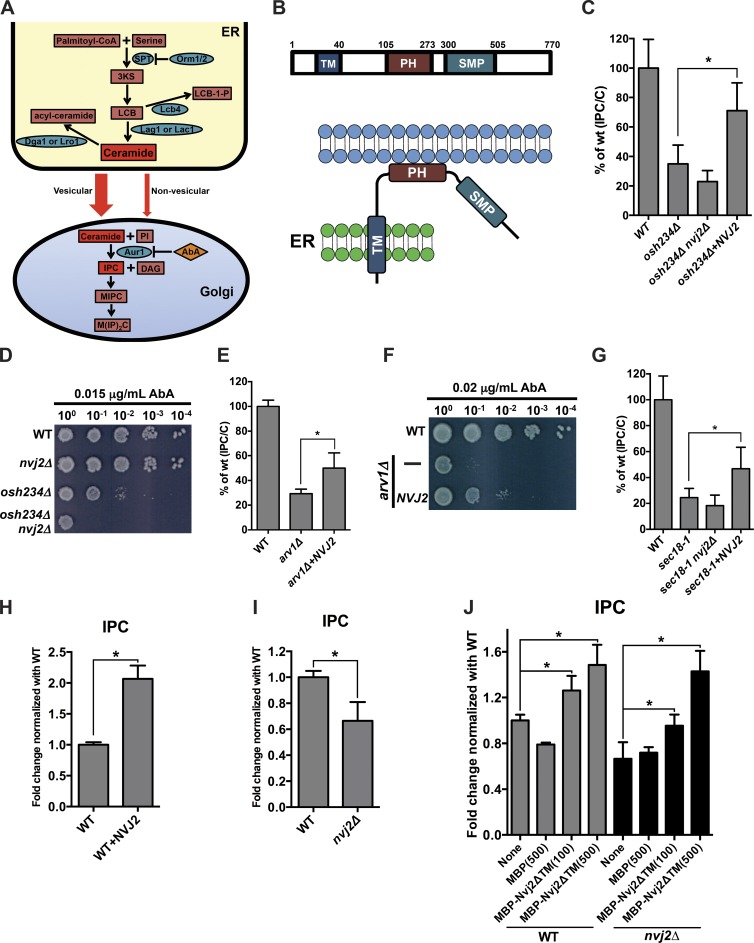Figure 1.
Nvj2p facilitates nonvesicular ceramide transport. (A) Diagram of sphingolipid metabolism and ceramide transport in S. cerevisiae. (B) Domains and putative topology of Nvj2p. Numbers indicate amino acids. (C and E) Cell were labeled with [3H]serine for 1 h at 25°C and the relative IPC/C determined. Mean ± SD of three (C) or six (E) independent experiments. (D and F) Serial dilutions of strains grown on SC containing the indicated concentration of AbA. (G) As in C, except that cells were grown for 20 min at 25°C in SC medium with 200 µg/ml cycloheximide, shifted to 37°C for 30 min, and labeled with [3H]serine for 30 min at 37°C. (H and I) Lysates from the indicated strains were labeled with [3H]DHS for 2 h at 25°C, and the relative amount of radiolabeled IPC formed was determined. Mean ± SD of three independent experiments. (J) As in H, except that, where indicated, MBP or MBP-Nvj2ΔTM was added; number of picomole protein added given in parentheses. Mean ± SD of six independent experiments. *, P < 0.05, t test. 3KS, 3-ketosphinganine; CoA, coenzyme A; MIPC, mannosyl-inositolphosphorylceramide; M(IP)2C, mannosyl-diinositolphosphorylceramide; WT, wild-type.

